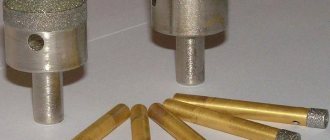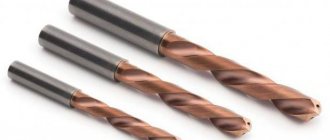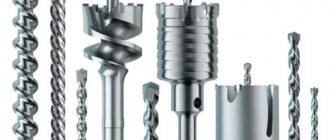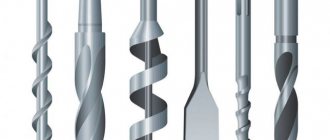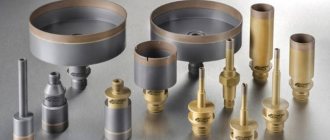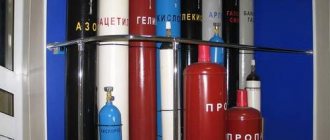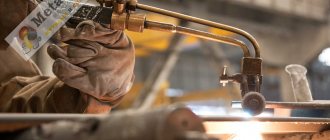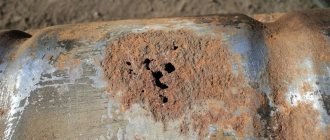Often, when processing metal workpieces, it is necessary to resort to special devices designed to work with particularly durable materials. This is exactly what a carbide drill can be considered. This part is most widely used in the processing of grooves. At the same time, it is used to carve metal products.
Machine tools for various purposes are often equipped with a similar element. If we consider the types of such drills offered on the market, the end types are considered the most popular.
When considering the products available for sale, it should be noted that they may have a different number of teeth and design options. Typically, these elements are created using special materials that are of high quality and demonstrate high wear resistance. These properties allow you to perform the necessary operations with minimal time.
What factors should be considered when choosing funds?
Among the devices available for drilling, several of the most common types can be distinguished:
- cylindrical;
- end;
- keyed
It is possible to make the right decision in favor of the appropriate type only if the buyer has an idea of what he plans to use this device for. In addition to the drilling depth, you need to know about the material that will have to be processed.
At the stage of selecting carbide drills for metal, the following parameters deserve the greatest attention:
- strength;
- quality of execution;
- brand and country of origin;
- material used for manufacturing;
- price;
- reliability.
The best solution would be if the buyer chooses drills from trusted manufacturers. By acting in this way, we can guarantee that there will be no forced interruptions during drilling , and low quality of finished products will also be eliminated.
Criterias of choice
When choosing carbide drills, which can have different geometric parameters and design, the following characteristics should be taken into account: the material of the product in which the hole needs to be drilled, as well as the diameter and depth of the hole. The most significant parameters that you need to pay attention to when choosing a drill with carbide inserts are:
- the material from which the cutting part is made;
- strength of the carbide used;
- drill manufacturing quality;
- brand and country of origin;
- price.
Drill bits with carbide inserts for drills have sharp cutting edges
Despite the fact that carbide drills produced under well-known brands have the highest price on the market, it is advisable to choose them, since their quality and reliability are at the highest level. Considering the fact that any carbide drill is not cheap, it makes no sense to choose a tool of dubious quality from unknown manufacturers.
Carbide drills: application, variety of models and differences
Carbide drilling products are widely used not only in production, but also in everyday life, the reason for which is their functional features and significant advantages.
The proposed models can be classified into several types, based on such a parameter as their scope of application. For example, if the task arises of creating large-diameter holes, then it is advisable to choose drills of the first type. Screw-type devices will help to effectively perform the operation if it is necessary to ensure a significant depth of the hole being created.
What types of carbide drills are there?
A characteristic feature of carbide drills for metal is a very durable titanium-tungsten base, the beneficial effect of which is to ensure high speed of work . In addition to this, the advantage of such products is their high resistance to external influences.
Types of drills
It is customary to distinguish the following types of carbide drills for metal:
- solid;
- welded;
- equipped with plates.
If there is a need to purchase carbide drills, it is advisable to consider models from well-known companies. This gives confidence in the high quality and reliability of the purchased product.
Drill designs with replaceable carbide inserts
When creating drills for metal equipped with replaceable carbide inserts, the diameter must be maintained, the range of which can be 12–63 mm. They allow you to create holes up to 5 diameters .
Moreover, they are able to work with surfaces made of various materials. At the heart of the metal drill there is a body that has precise seating surfaces for the inserts and directly carbide inserts, which are fixed in the body with screws. The design features of the metal drill body are related to the external design and size of the grooves used to remove chips. They can have a straight or spiral design. It is worth noting that they may differ in terms of the helix angle . If the channel profiling was carried out in compliance with the technology, then this makes it possible to perform processing with high feed rates. Moreover, tangling of chips is eliminated here, and the quality of the processed surface remains quite high.
It is also necessary to pay attention to the design of the channels for supplying coolant. It is best when they are located close to the body area. This placement option makes it possible to reduce the core of the drill body to a minimum , which makes it possible to increase the grooves used to remove chips.
Design
The design of carbide inserts has its own characteristics, thanks to which it is possible to achieve high productivity and stability of the tool when processing various materials and operating the tool in any conditions.
It is possible to ensure higher productivity and stability of the tool due to the geometry of the front surface of the insert, the grade of the carbide and the design of the insert itself. The most widespread are carbide inserts for drills, having the shape of a three- and tetrahedron. Drilling using these devices allows the hole to be created to have an almost flat bottom. A feature of outdated modifications of drills is the presence of a square , triangular or “broken triangle” type plate. When using such devices, you can guarantee fairly good results in terms of performance, durability and quality. However, they still do not show as impressive results as drilling products equipped with specially profiled inserts.
The best results can be expected from a technology that is implemented in a design called step-by-step cutting. Here attention is paid to the cutting edge of the central tetrahedral plate, made in the form of a wave. Initially, with the help of such technology, it is possible to stabilize the drill and at the same time minimize the risk of its drift. In addition to this, a significant reduction in cutting force is observed.
Drills equipped with replaceable carbide inserts for metal are also distinguished by the fact that they allow you to create holes whose diameter exceeds the nominal value of the drill . This is achieved by moving the drill on a lathe relative to the axis of the element at a distance in the range of 0.8–3.5 mm. The exact value is determined directly by the diameter.
A similar operation on a machining center is performed using eccentric bushings. Adjustable drill chucks can also be used instead. At the same time, using a drill with replaceable carbide inserts for metal, you can perform operations such as boring pre-created holes, as well as chamfering. This problem is solved using the peripheral drill plate.
When planning to use drills with replaceable inserts for metal, you must keep in mind that they can be used to process inclined and concave surfaces without resorting to surface preparation and drilling. To successfully cope with such a task, you only need to reduce the feed rate during plunge-in by 50–70%.
Types of drills with carbide inserts
The modern market offers a wide variety of carbide drills designed for working on metal and other materials. The classification of such a tool is carried out according to several parameters, which, in particular, include:
- material for manufacturing a carbide plate, which can be alloys of grades VK6, VK8, etc.;
- method of attaching carbide inserts to the main part of the drill;
- the shape of carbide plates;
- the shape of the grooves between the working surfaces of the drill, designed for effective removal of processing waste.
Alloys of the tungsten-carbide group are predominantly used as the material for the manufacture of cutting inserts that are equipped with a carbide drill. The most popular is the VK8 alloy.
Properties and applications of tungsten group alloys
Such alloys, produced mainly by powder metallurgy methods, fully correspond to their name - “hard”. In particular, the hardness of the popular VK8 alloy, depending on the conditions of its production, is in the range of 1670–2800 units on the Rockwell scale. Thanks to this, a drill equipped with cutting inserts made of VK8 alloy can be successfully used to make holes in materials such as alloy steel (including heat-resistant steel), cast iron, and hard wood. It is also important that the VK8 alloy, compared to other carbide materials, is affordable.
Carbide inserts can be fixed to the cutting part of the drill by soldering or by means of a screw (mechanical) connection. In the first case, carbide inserts can be ground a limited number of times, although they are characterized by higher reliability. In addition, they break quite often. That is why tools with non-sharpening cutting inserts that are attached mechanically have become very popular.
Types of Carbide Inserts Used for Drills
To equip drills of this type, carbide inserts are used in the form:
- parallelogram;
- rectangle;
- rhombus;
- irregular triangle (such plates are characterized by the presence of six cutting edges).
When using carbide drills for processing metal and other materials, the shape of the grooves between the working surfaces of the tool is of great importance. Regardless of the shape of such grooves, their internal surface must be carefully polished to ensure effective removal of chips from the processing zone.
Carbide drill with internal coolant supply
Increase in productivity
Among the advantages of metal drills equipped with replaceable carbide inserts, it should be highlighted that they can increase productivity , durability and achieve greater savings per part.
If you plan to create holes Ф25, and the surface used is made of steel, then when working with a high-quality drill for metal made of high-speed steel, it is best to use the following processing modes:
- For the spindle, a rotation speed of 380 min-1 is selected;
- feed per revolution is set at 0.4 mm/rev;
- the minute feed rate will be 152 mm/min.
If a drill with replaceable carbide inserts is selected for processing a similar material, then the spindle speed should be set to 3700 rpm, the feed per revolution will be 0.09 mm/rev, and the optimal minute feed will be 333 mm/min .
A special feature of all inserts is the presence of four cutting edges. In addition to this, it should be remembered that carbide inserts have much greater durability than drilling products made on the basis of high-speed steel . If the choice was made on devices equipped with replaceable plates, then the user will not have to waste time and effort on such an operation as regrinding the tool. This advantage acquires particular relevance in situations where it is planned to create many holes.
Design features
Structurally, the product, like any other type of drill, consists of a working part and a shank.
The products differ in the material of manufacture and the design features of the working part. The materials for their manufacture are alloys of the tungsten-carbide group of brands VK3, VK4, VV6, VK8, VK10, VK3-M, VK6-OM, VK10-OM, VK15-OM, etc. The symbol is deciphered as follows. VK denotes tungsten carbide, the number following it is the cobalt content in%. The letters M and OM indicate the grain size of the alloy: M – fine-grained, OM – extra-fine-grained. The absence of a letter means that the alloy is medium grain. Thus, the symbol VK15-OM says that the alloy is extremely fine-grained with a tungsten carbide content of 85% and cobalt of 15%.
When heated above 900 °C and even higher, such alloys, sintered and cast, retain their quality characteristics. The choice of a specific brand depends on the type of material processing in which the drilling operation will be performed. This can be rough, semi-finish, finishing and final drilling.
Carbide cutting tools are necessarily rigidly fixed in the equipment chuck and operate under harsh conditions - at high speeds. Therefore, the inner part of medium and large diameter drills is made with grooves for supplying coolant. This reduces wear on cutting edges and heating temperature, and facilitates chip removal.
Application of coolant
To achieve the best results when using a metal drill equipped with replaceable carbide inserts, internal coolant must be present .
If you have to deal with holes whose depth does not exceed one diameter, then it is permissible to refuse to use coolant. When determining coolant flow, the diameter of the metal drill used should be taken into account. If we consider the range of drills for metal equipped with replaceable carbide inserts, then it includes a fairly large number of modifications. Moreover, to obtain the best results when drilling, you should first of all take care of the correct selection and use of metal-cutting tools. For this reason, when deciding to use a new technology or make changes to an existing one, it is advisable to involve specialists in the implementation of this plan. They will not only help you suggest the most suitable solution for the problem at hand, but will also help you implement it most effectively.
Cooling and lubrication of carbide drills
As mentioned above, to make machining with carbide drills more efficient, it is necessary to ensure internal cooling of the tool. When using such drills, you can avoid using lubricating and cooling liquid in cases where the depth of the hole being formed does not exceed one tool diameter.
The quality of the hole being made, as well as the speed of its drilling, is influenced not only by the amount of coolant supplied to the internal cavity of the drill (at least 12–15 l/min), but also by the pressure value (at least 12–15 atm). The lubricating and cooling liquid supplied to the processing zone in such quantity and with such pressure provides not only intensive cooling of the tool, but also effective removal of chips and other drilling waste.
Drilling with external coolant supply
Technical recommendations for drilling metals
To properly center a metal drill, you must use a centering pin. To do this, you should mark the hole, focusing on the markings. then inserted into the recess and the magnet is turned on .
Next, you should re-check that the pin is positioned correctly, since the tripod often moves when the magnet is working. Decide on the optimal speed. This parameter is of great importance. Please note that if you select a higher speed than recommended, the drilling job will not be completed. It is imperative to ensure a rotation speed of at least 25% of the recommended one. When working with carbide drills, remember that they are sensitive to excessively low speeds . In this case, you may encounter phenomena such as increased vibration and chipping of teeth. If the speed is increased by more than 20%, then when using drills made of high-speed and powder steel, the latter will quickly become unusable.
You need to choose the right feed. At the beginning of work, it is necessary to set the flow at a level 2 times lower than the recommended one. It should be kept in mind that if there is too much pressure on the drill, the speed will remain the same. To achieve greater productivity, it is recommended to use equipment with increased rotation speed in combination with carbide drills . Sometimes you may need to apply more force while drilling. If this happens, then there is a high probability that you are working with a dull drill bit or are trying to create a hole in a material that is too hard.
